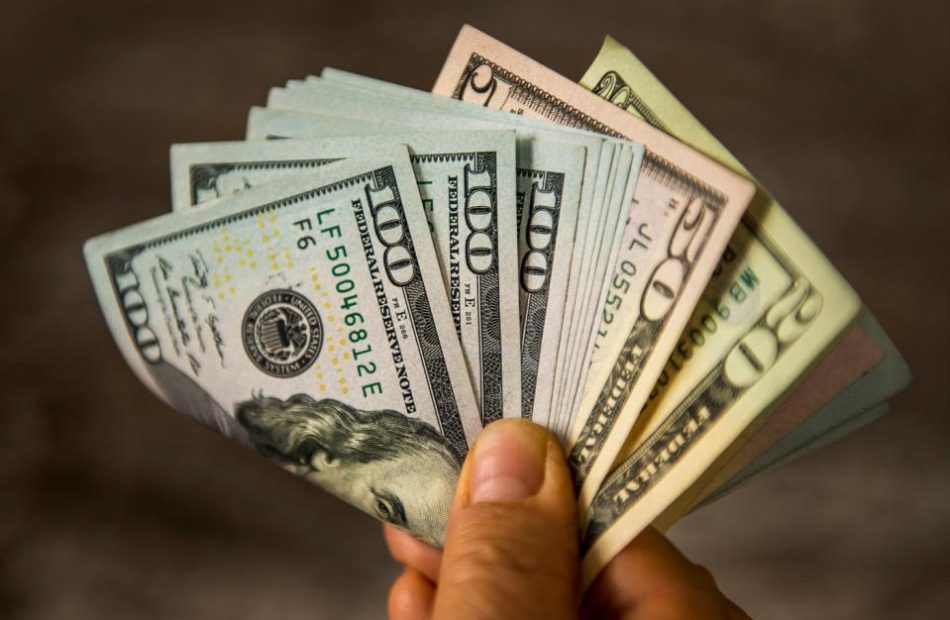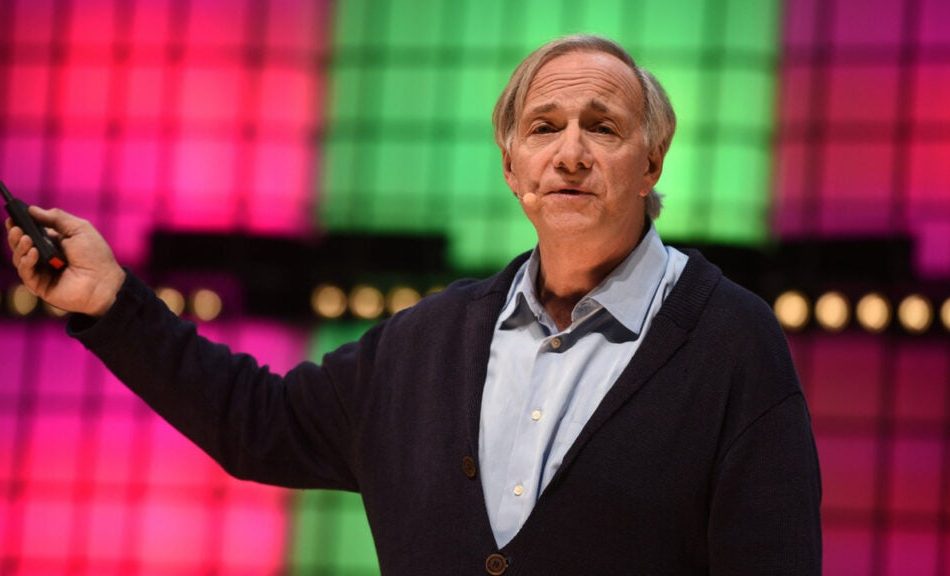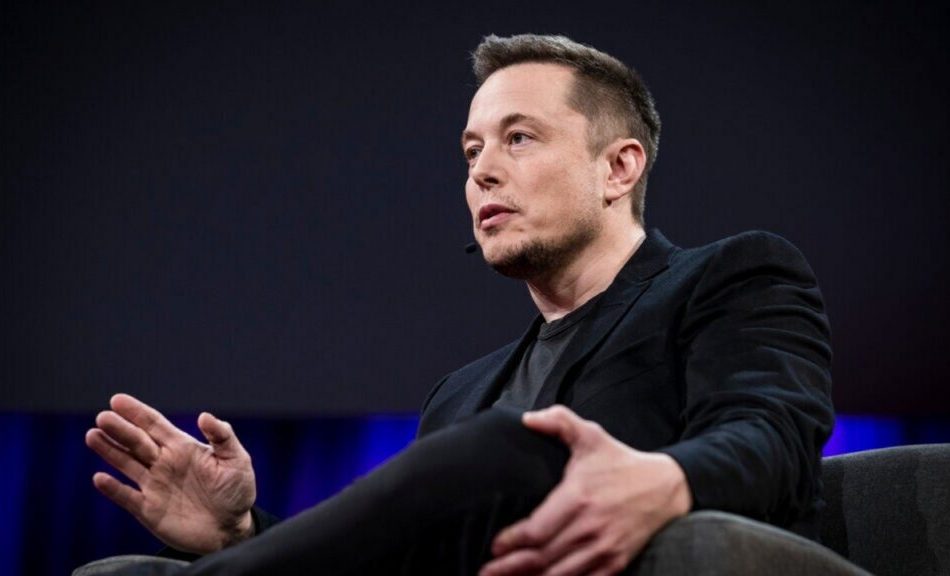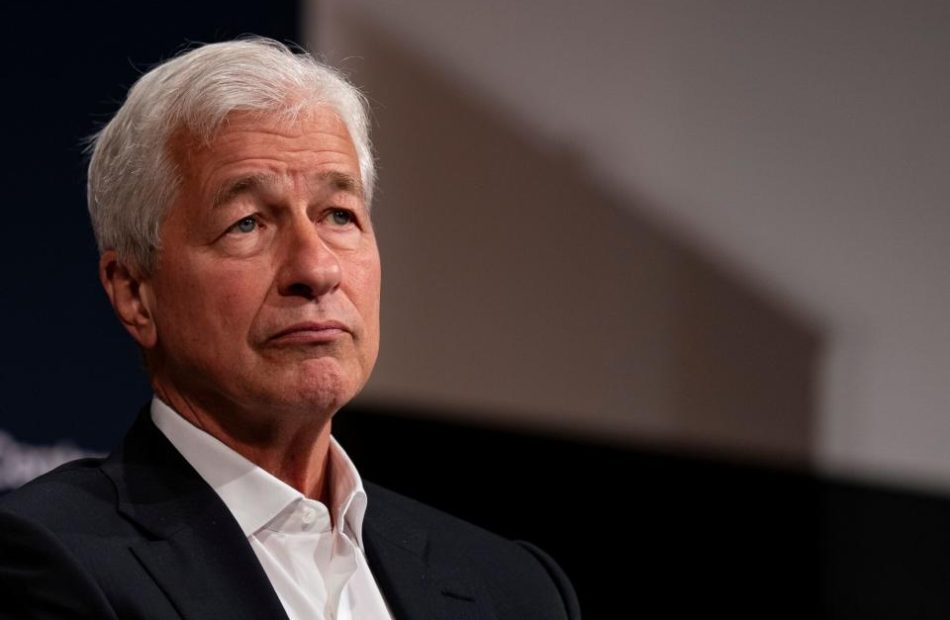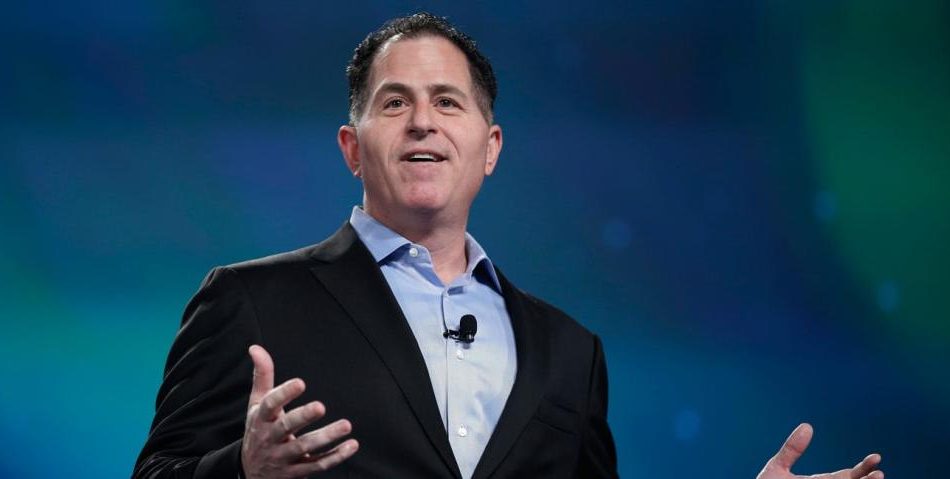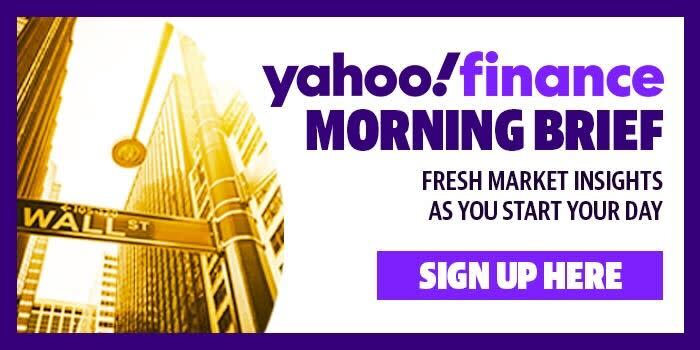Should You Buy the 3 Highest-Paying Dividend Stocks in the S&P 500?
Dividend stocks could soon get a closer look from investors. That’s because the Federal Reserve is expected to cut rates on Wednesday, beginning a new cycle of lower rates, which will bring down Treasury yields and interest rates on savings accounts.
That process makes dividend stocks more attractive. Dividend stocks are likely to move higher as bond yields fall because bond investors will rotate back into dividend stocks in search of yield.
If you’re looking for dividend stocks, a good place to start your search is the S&P 500. Let’s take a look at the three highest-yielding dividend stocks in the broad-market index today.
1. Walgreens Boots Alliance (dividend yield: 11.1%)
If you’re a dividend investor, it’s important to understand the difference between a high-yield stock and a yield trap, and Walgreens Boots Alliance (NASDAQ: WBA) looks like a classic example of a yield trap.
Shares of the pharmacy chain are down a whopping 65% year to date, declining steadily as it’s struggled with a loss of COVID-related revenue, narrowing margins in its pharmacy business, an ongoing decline in the retail business, and challenges related to the misguided acquisition of VillageMD, a primary care clinic, which has led to significant losses in the business.
According to conventional metrics, Walgreens now looks dirt cheap, trading at a forward P/E of just above 3, but that’s based on adjusted earnings. However, that likely reflects investor fears over more write-downs and falling profits in the coming quarter. In fact, the company has taken impairment charges of $13.6 billion this year, mostly related to its acquisition of VillageMD.
It also had a negative free cash flow of $1.5 billion this year.
Walgreens could be forced to cut its dividend again, and the company seems likely to be removed from the S&P 500 soon as its market cap falls below $8 billion. The stock is best avoided.
2. Altria (dividend yield: 7.9%)
Altria Group (NYSE: MO) was one of the top-performing stocks in the market for roughly 50 years through 2017, but that’s changed more recently as smoking rates continue to decline and the company has struggled to evolve with new tastes.
Its $12.8 billion investment in JUUL Labs imploded and it also lost most of its investment in cannabis grower Cronos Group.
More recently, the company acquired NJOY for exposure to the vape market.
Tobacco stocks surged through the spring as investors seemed to sense a turning point as next-gen products went mainstream. Plus, bond investors may be preparing themselves for the rotation into dividend stocks.
Altria is a solid dividend payer with a yield of 7.9%, and the company has raised its dividend 59 times in the last 55 years.
I’m still skeptical of the company’s ability to grow long-term given the decline in cigarettes, but you could certainly do worse than Altria if you’re looking for a high-yield dividend stock as its 7.9% yield is well-funded and reliable.
3. Ford Motor Company (dividend yield: 5.6%)
Like Altria, Ford Motor Company (NYSE: F) has been a leader in its industry for generations, but the stock has struggled in recent years as the company has lost money in international markets, watched demand for electric vehicles (EVs) plateau, and seems stuck growing slowly in a mature industry.
Shares tumbled following its second-quarter earnings report as the company expects a $5 billion loss in the EV division, and profits fell in the second quarter, due in part to pressure in the EV division and slowing demand.
The good news is that Ford’s other divisions, its combustion vehicle division, and its commercial vehicles, remain highly profitable.
For the full year, Ford expects an adjusted operating profit of $10 billion to $12 billion and adjusted free cash flow of $7.5 billion to $8.5 billion. That makes the stock look cheap, trading at just 4 times its adjusted operating profit and 5 times its adjusted free cash flow.
Ford now pays a dividend yield of 5.6%. If the company can benefit from the growth of hybrid vehicles, the stock could move higher from here. While Ford has underperformed the market for years, it looks like a decent buy at the current price, especially if you’re looking for a high-yield dividend stock.
Should you invest $1,000 in Ford Motor Company right now?
Before you buy stock in Ford Motor Company, consider this:
The Motley Fool Stock Advisor analyst team just identified what they believe are the 10 best stocks for investors to buy now… and Ford Motor Company wasn’t one of them. The 10 stocks that made the cut could produce monster returns in the coming years.
Consider when Nvidia made this list on April 15, 2005… if you invested $1,000 at the time of our recommendation, you’d have $715,640!*
Stock Advisor provides investors with an easy-to-follow blueprint for success, including guidance on building a portfolio, regular updates from analysts, and two new stock picks each month. The Stock Advisor service has more than quadrupled the return of S&P 500 since 2002*.
*Stock Advisor returns as of September 16, 2024
Jeremy Bowman has no position in any of the stocks mentioned. The Motley Fool recommends Cronos Group. The Motley Fool has a disclosure policy.
Should You Buy the 3 Highest-Paying Dividend Stocks in the S&P 500? was originally published by The Motley Fool
Prediction: This Will Be the First Healthcare Stock to Join the Trillion-Dollar Club
Right now, there are seven companies in the world with a market capitalization in excess of $1 trillion. Those companies are Apple, Microsoft, Nvidia, Amazon, Alphabet, Saudi Aramco, and Meta Platforms.
Considering how integrated technology has become in almost all aspects of daily life, it’s not entirely surprising that many of the largest companies in the world operate in the technology industry. While the prospects of each company above seem poised to expand even more thanks to the artificial intelligence (AI) revolution, I’d encourage investors to think about what other industries may be ripe for disruption.
One healthcare behemoth is disrupting modern medicine in more ways than one. With its market capitalization currently hovering around $830 billion, I think it’s only a matter of time before Eli Lilly (NYSE: LLY) gets a key to the exclusive trillion-dollar club.
Dominating healthcare’s newest favorite opportunity
One of the most prominent areas in the healthcare industry right now is weight loss. Glucagon-like peptide-1 (GLP-1) agonists such as Ozempic, Wegovy, Mounjaro, and Zepbound have witnessed unparalleled demand from people with diabetes and obesity, and have blossomed into blockbuster drugs for their developers.
Per estimates published by the World Health Organization (WHO), 1 in 8 people around the world meet the criteria for obesity — meaning that more than 1 billion people worldwide live with obesity. Given this huge number, I think that there’s a clear need for further development of and access to GLP-1 medications.
According to Grand View Research, the global total addressable market (TAM) for GLP-1 medicines is expected to increase fourfold from today’s estimated size and reach $145 billion by 2030. Moreover, a host of pharmaceutical companies of all sizes including Pfizer, Roche, Amgen, Altimmune, and Viking Therapeutics are all looking to disrupt industry incumbents by making their own inroads in the weight loss arena.
Eli Lilly, however, is different from its cohorts. Let’s dig into another area it’s disrupting outside of the weight loss realm.
On the cutting edge of medicine
Besides diabetes and chronic weight management, another area emerging as a big opportunity in medicine is treating Alzheimer’s disease. As with the GLP-1 market, treating Alzheimer’s is a huge opportunity with limited competition — making the market fragmented and open for disruption.
Although a number of treatments can help patients cope with symptoms of Alzheimer’s, a drug known as Leqembi is one of the more prominent medicines on the market. Leqembi was developed by Biogen and Eisai.
According to estimates from Market.Us, the global TAM for treating Alzheimer’s is expected to increase at a compound annual growth rate (CAGR) of 19% between 2024 and 2033 — reaching a size of nearly $31 billion.
Considering that Eli Lilly received approval from the Food and Drug Administration (FDA) in July for its own Alzheimer’s treatment, donanemab, I’m excited to see what will come from this new opportunity.
In addition to entering another fragmented market, the healthcare giant recently announced a strategic partnership with OpenAI — the developer of ChatGPT. The idea behind the relationship is to bridge the gap between medicine and AI. More specifically, bringing the power of generative AI to the healthcare space could reap benefits in areas such as processing data in clinical trials, as well as drug discovery for underserved medical conditions.
First to join the trillion-dollar club?
Eli Lilly develops a host of medicines used to treat diabetes, obesity, cancer, and even plaque psoriasis. Right now, the company’s primary sources of growth stem from its GLP-1 drugs Mounjaro and Zepbound, as well as its cancer drug Verzenio — which received an expanded indication from the FDA last year.
While Mounjaro and Zepbound could also receive expanded indications, Lilly isn’t resting on its laurels; it’s already exploring many other areas in medicine beyond weight loss and treating Alzheimer’s disease.
Eli Lilly is nearly 150 years old, and the company has managed to stay relevant with continuous and relentless innovation. I see it as well-positioned to generate strong growth for many years to come. Its prospects include GLP-1 agonists both for weight loss and for other conditions, and its new approach to treating Alzheimer’s disease. Combining those with its robust pipeline and existing portfolio of medicines, I’m hard-pressed to see Lilly’s growth narrative slowing down anytime soon.
If you’re a long-term investor, I think now is a good time to scoop up shares of Eli Lilly. With so much growth on the horizon, the company could soon reach its next milestone: the trillion-dollar club.
Should you invest $1,000 in Eli Lilly right now?
Before you buy stock in Eli Lilly, consider this:
The Motley Fool Stock Advisor analyst team just identified what they believe are the 10 best stocks for investors to buy now… and Eli Lilly wasn’t one of them. The 10 stocks that made the cut could produce monster returns in the coming years.
Consider when Nvidia made this list on April 15, 2005… if you invested $1,000 at the time of our recommendation, you’d have $715,640!*
Stock Advisor provides investors with an easy-to-follow blueprint for success, including guidance on building a portfolio, regular updates from analysts, and two new stock picks each month. The Stock Advisor service has more than quadrupled the return of S&P 500 since 2002*.
*Stock Advisor returns as of September 16, 2024
John Mackey, former CEO of Whole Foods Market, an Amazon subsidiary, is a member of The Motley Fool’s board of directors. Suzanne Frey, an executive at Alphabet, is a member of The Motley Fool’s board of directors. Randi Zuckerberg, a former director of market development and spokeswoman for Facebook and sister to Meta Platforms CEO Mark Zuckerberg, is a member of The Motley Fool’s board of directors.
Adam Spatacco has positions in Alphabet, Amazon, Apple, Eli Lilly, Meta Platforms, Microsoft, and Nvidia. The Motley Fool has positions in and recommends Alphabet, Amazon, Apple, Meta Platforms, Microsoft, Nvidia, and Pfizer. The Motley Fool recommends Amgen, Biogen, and Roche Ag and recommends the following options: long January 2026 $395 calls on Microsoft and short January 2026 $405 calls on Microsoft. The Motley Fool has a disclosure policy.
Prediction: This Will Be the First Healthcare Stock to Join the Trillion-Dollar Club was originally published by The Motley Fool
Ray Dalio Outlines Key Global Economic Drivers At Milken Asia Summit: Fed Policies, US-China Tensions, And Tech's Impact
Billionaire Ray Dalio shared his insights on the primary forces shaping the global economy, during Milken Institute’s Asia Summit in Singapore.
What Happened: Dalio, founder of Bridgewater Associates, pointed to the U.S. Federal Reserve’s interest rate decisions and the country’s debt management as significant factors. He questioned the impact of the Fed’s interest rate changes on national debt, reported CNBC.
He also discussed the internal political divide in the U.S., emphasizing the “irreconcilable differences” between political factions. This comes as Vice President Kamala Harris is now seen as more likely to win the 2024 election than former President Donald Trump, according to a CNBC Fed Survey.
Dalio cited the geopolitical tensions between the U.S. and China as another major concern. He mentioned ongoing issues like territorial disputes and economic tariffs, warning of the potential for conflict.
Natural disasters and climate change were also on Dalio’s list. He noted that acts of nature have historically caused more disruption than wars, highlighting the increasing costs of climate change.
Finally, Dalio spoke about the transformative potential of technology. He stressed that those who can effectively adopt and invest in technology will reap significant benefits, potentially even winning military conflicts.
“Whoever wins the technology war is going to win the military war,” Dalio said.
Why It Matters: Dalio’s concerns about U.S. political divisions echo his earlier warnings about potential election chaos if the loser, particularly Trump, refuses to concede. In a recent interview, Dalio expressed his fear for democracy, highlighting the potential for a cutthroat, all-or-nothing approach from both sides.
On the economic front, the World Economic Forum President Borge Brende has also raised alarms about global debt levels nearing historic highs, warning of a potential decade of low growth and the risk of “stagflation” in advanced economies. Brende emphasized the need for continued global trade and urged governments to address the mounting debt situation.
Regarding technology, the intersection of artificial intelligence and cryptocurrency is predicted to inject $20 trillion into the global economy by 2030. This boom has created a shortage of data centers, AI chips, and electricity, with major cloud companies expected to spend nearly $200 billion on data centers by 2025 to meet AI demand.
Dalio’s emphasis on climate change aligns with ongoing criticisms of the World Economic Forum for its perceived hypocrisy in lecturing about climate change while attendees use private jets extensively.
Read Next:
Image Via Shutterstock
This story was generated using Benzinga Neuro and edited by Kaustubh Bagalkote
Market News and Data brought to you by Benzinga APIs
© 2024 Benzinga.com. Benzinga does not provide investment advice. All rights reserved.
Boeing And Its Largest Union Return To Table With Federal Mediators After 30K Workers Strike Over Failed Wage And Pension Talks
Boeing BA will restart contract negotiations on Wednesday with its largest union.
What Happened: The talks will involve federal mediators after the two sides failed to agree on wages and pensions on Tuesday. The International Association of Machinists and Aerospace Workers (IAM), representing over 30,000 Boeing factory workers, has been on strike since last Friday.
The union is demanding a 40% wage increase over four years, significantly higher than Boeing’s 25% offer, which was overwhelmingly rejected, Reuters reported.
IAM expressed frustration on X, stating, “The company was not prepared and was unwilling to address the issues essential for ending this strike: Wages and Pension.”
The strike has disrupted the production of Boeing’s popular 737 MAX jets and other widebody aircraft, causing delays in deliveries to airlines. Boeing has announced a hiring freeze and is considering temporary furloughs to manage costs, as the company is already dealing with $60 billion in debt.
Why It Matters: The strike by over 30,000 workers has already had significant repercussions. Boeing’s stock has been falling since the strike began, exacerbated by the company’s announcement of a hiring freeze and potential furloughs. The measures were outlined by CFO Brian West, who emphasized the urgent need to preserve cash amid the strike.
The union’s demands for higher wages and better pensions are a critical sticking point. IAM President Jon Holden has indicated that the strike could last a while. The machinists, who produce key aircraft models like the 737 Max and the 777, are standing firm on their demands.
Analysts have also weighed in on the situation. BofA Securities analyst Ronald J. Epstein suggested that Boeing might need to offer additional concessions to resolve the strike, despite the company’s multi-billion dollar debt. Epstein noted that the strike could further delay Boeing’s plans to ramp up production rates for its 737 jets, initially scheduled for September 2024 but now pushed to March 2025.
Price Action: Boeing closed at $156.39 on Tuesday, according to Benzinga Pro.
Read Next:
Image Via Shutterstock
This story was generated using Benzinga Neuro and edited by Pooja Rajkumari
Market News and Data brought to you by Benzinga APIs
© 2024 Benzinga.com. Benzinga does not provide investment advice. All rights reserved.
Elon Musk Accuses FAA Of Fining SpaceX Over 'Nonsense' That Doesn't Affect Safety: 'Amazingly, No Starliner Fines For Boeing'
Tesla Inc. and SpaceX CEO Elon Musk has publicly criticized the Federal Aviation Administration for imposing a $633,009 fine on SpaceX for regulatory violations, hinting at the agency’s favoritism towards Boeing Co BA.
What Happened: According to a post by Musk on X, he questioned why Boeing was not fined despite NASA deeming their spacecraft unsafe for returning astronauts. Musk’s comments were in response to a post by Mario Nawfal, who criticized the FAA’s actions against SpaceX.
“Amazingly, no Starliner fines for Boeing! The FAA space division is harassing SpaceX about nonsense that doesn’t affect safety while giving a free pass to Boeing even after NASA concluded that their spacecraft was not safe enough to bring back the astronauts,” Musk wrote.
Musk also stated that resignations from FAA leadership are necessary.
Nawfal highlighted that the FAA had to go back a year to find violations against SpaceX, while Boeing faced no penalties for safety issues that left two American astronauts stranded at the ISS. Meanwhile, SpaceX plans to sue the FAA for regulatory overreach.
The FAA has proposed a fine against SpaceX for alleged violations during two launches in 2023, accusing the company of not adhering to license requirements.
This comes amid ongoing scrutiny of Boeing’s safety and quality control issues, with FAA Administrator Mike Whitaker set to testify before Congress on Sept. 24 and 25 regarding the agency’s oversight of Boeing.
Why It Matters: The tension between SpaceX and the FAA is not new. Recently, Musk highlighted that SpaceX’s competitors “take up less than we do, and they take nothing down, and they get paid twice as much,” referring to the disparity in treatment between SpaceX and Boeing.
This statement came amid Boeing’s decision to freeze hiring and consider furloughs due to a strike by over 30,000 workers.
Adding to the context, former President Donald Trump recently praised Musk for his contributions to U.S. space development, stating that the U.S. was previously lagging behind China and Russia in space but is now a leader, thanks to Musk’s efforts.
Moreover, SpaceX has achieved significant milestones, including the recent return of the Polaris Dawn crew after a 5-day mission that featured the first commercial spacewalk.
Musk’s dominance in space is further illustrated by SpaceX controlling nearly two-thirds of the planet’s satellites, with plans to launch almost 40,000 more. This rapid expansion of the Starlink satellite network has positioned SpaceX as a formidable player in the global space industry.
Read Next:
Image Via Shutterstock
This story was generated using Benzinga Neuro and edited by Kaustubh Bagalkote
Market News and Data brought to you by Benzinga APIs
© 2024 Benzinga.com. Benzinga does not provide investment advice. All rights reserved.
JPMorgan’s Dimon says Fed rate cut won’t be ‘Earth-shattering’
(Bloomberg) — JPMorgan Chase & Co. (JPM) Chief Executive Officer Jamie Dimon said whether the Federal Reserve cuts interest rates by 25 or 50 basis points, the move is “not going to be earth-shattering.”
Most Read from Bloomberg
“They need to do it,” Dimon said at a conference on Tuesday. But “it’s a minor thing when the Fed’s raising rates and lowering rates because underneath that there’s a real economy.”
Fed officials are expected to lower interest rates this week for the first time in more than four years. Ahead of the decision, bond traders have been divided over whether the Fed will cut by a quarter-point or a half point as the central bank continues to pursue a soft landing.
Dimon said last month that he doesn’t “think it matters as much as other people think,” citing ongoing economic uncertainty and inflationary pressures. He’s been warning for more than a year that inflation may be stickier than investors expect, and wrote in his annual letter to shareholders in April that his firm is prepared for interest rates ranging from 2% to 8% or more.
On Tuesday at the Georgetown Psaros Center for Financial Markets and Policy’s annual Financial Markets Quality conference, he said again that geopolitical issues — including wars in Ukraine and the Middle East as well as the US’s relationship with China — are his top concern. It “dwarfs any one I’ve had since I’ve been working,” he said.
“People overly focus on, ‘are we going to have a soft landing, a hard landing?’” Dimon said. “Honestly, most of us have been through all that stuff, it doesn’t matter as much.”
Most Read from Bloomberg Businessweek
©2024 Bloomberg L.P.
SPRINKLR SHAREHOLDER ALERT BY FORMER LOUISIANA ATTORNEY GENERAL: KAHN SWICK & FOTI, LLC REMINDS INVESTORS WITH LOSSES IN EXCESS OF $100,000 of Lead Plaintiff Deadline in Class Action Lawsuit Against Sprinklr, Inc. – CXM
NEW ORLEANS, Sept. 17, 2024 (GLOBE NEWSWIRE) — Kahn Swick & Foti, LLC (“KSF”) and KSF partner, former Attorney General of Louisiana, Charles C. Foti, Jr., remind investors that they have until October 15, 2024 to file lead plaintiff applications in a securities class action lawsuit against Sprinklr, Inc. CXM, if they purchased the Company’s securities between March 29, 2023 and June 5, 2024, inclusive (the “Class Period”). This action is pending in the United States District Court for the Southern District of New York.
What You May Do
If you purchased securities of Sprinklr and would like to discuss your legal rights and how this case might affect you and your right to recover for your economic loss, you may, without obligation or cost to you, contact KSF Managing Partner Lewis Kahn toll-free at 1-877-515-1850 or via email (lewis.kahn@ksfcounsel.com), or visit https://www.ksfcounsel.com/cases/nyse-cxm/ to learn more. If you wish to serve as a lead plaintiff in this class action, you must petition the Court by October 15, 2024.
About the Lawsuit
Sprinklr and certain of its executives are charged with failing to disclose material information during the Class Period, violating federal securities laws.
On June 5, 2024, the Company disclosed disappointing financial news including significantly reduced growth expectations, cutting fiscal year 2025 projections an additional three percent, down to 7% annual growth, due to reduced customer retention in the Company’s core business and macro headwinds.
On this news, the price of Sprinklr’s shares fell from a closing price of $10.84 per share on June 5, 2024 to $9.20 per share on June 6, 2024, a decline of more than 15% in the span of one day.
The case is Boshart v. Sprinklr, Inc., No. 24-cv-06132.
About Kahn Swick & Foti, LLC
KSF, whose partners include former Louisiana Attorney General Charles C. Foti, Jr., is one of the nation’s premier boutique securities litigation law firms. KSF serves a variety of clients – including public institutional investors, hedge funds, money managers and retail investors – in seeking recoveries for investment losses emanating from corporate fraud or malfeasance by publicly traded companies. KSF has offices in New York, Delaware, California, Louisiana and New Jersey.
To learn more about KSF, you may visit www.ksfcounsel.com.
Contact:
Kahn Swick & Foti, LLC
Lewis Kahn, Managing Partner
lewis.kahn@ksfcounsel.com
1-877-515-1850
1100 Poydras St., Suite 960
New Orleans, LA 70163

Market News and Data brought to you by Benzinga APIs
© 2024 Benzinga.com. Benzinga does not provide investment advice. All rights reserved.
Not Paying Your Bills? Wall Street Worries That Too Many Credit Card Balances Are Turning Delinquent
Stocks held by consumer-lending firms fell last week after Wall Street executives warned of lower-income borrowers’ struggling to pay bills.
What Happened: Banking executives at a recent Barclays conference in New York noted how delinquencies are on the rise, the Wall Street Journal reported.
The average interest rate on a credit card as of May was 21.51%, up from around 15% in 2019, Federal Reserve data shows.
About 9.1% of credit card balances turned delinquent over the past 12 months to mark the highest rate in over a decade, according to an August report from the Federal Reserve Bank of New York.
“What that tells you is if people do get behind on their payments in this environment, it’s tougher to get out of them,” TD Cowen analyst Moshe Orenbuch said.
Why It Matters: Bread Financial, a credit card company that serves lower-income borrowers, said it expects higher charge-off rates — balances that banks write off as a result of lack of payments — this year.
Late payments and charge-offs on auto loans were higher than expected in July and August as borrowers grapple with the cost of living and a worsening labor market, Ally Financial Inc. ALLY CFO Russ Hutchinson said.
This worried investors because car payments are usually the last bills to go delinquent because cars are needed for transportation.
The average interest rate on a 60-month loan for a new car was 8.2% as of May, according to Fed data, up from 5.3% in 2019.
Over the past year, roughly 8% of auto loans turned delinquent, according to the New York Fed, the highest rate in over a decade.
Price Action: Consumer-lending companies trended upward into Tuesday’s early afternoon trading.
- Enova International Inc. ENVA rose 3.48% to $83.32
- Qifu Techhnology, Inc. QFIN gained 1.02% to $25.17
- Regional Management Corp. RM went up 2.4% to $33.25
Car-loan providers also rose on Tuesday.
- Bank of America Corporation BAC inched up 0.93% to $39.47
- Ally Financial gained 2.42% to $33.83
- Capital One Financial Corporation COF picked up 3.13% to $145.36
Read Now:
Image: Shutterstock
Market News and Data brought to you by Benzinga APIs
© 2024 Benzinga.com. Benzinga does not provide investment advice. All rights reserved.
The fabulous life of Michael Dell, the $108 billion tech icon betting big on AI
-
Michael Dell is one of the world’s wealthiest people, with a net worth of more than $100 billion.
-
The Dell Technologies founder made his fortune by democratizing the PC and striking shrewd deals.
-
Here’s a look at his background, career, and how he spends his fortune.
Michael Dell, the tech entrepreneur who helped bring the personal computer to the masses, ranks among the world’s wealthiest people with a net worth of $108 billion, per the Bloomberg Billionaires Index.
From his early career as one of the youngest CEOs of a Fortune 500 company until now, Dell is used to getting his way. He was only 23 when his company had its IPO in 1988. Dell took the PC maker private in 2013 only to relist it five years later, and has now shifted the company’s focus toward serving the artificial intelligence boom.
Dell lives the extravagant life of a successful business figure as well, complete with all of the private planes, summer homes, and sweet rides you’d expect from a billionaire.
Michael Dell was born on Feb. 23, 1965, in Houston, Texas.
Dell was fascinated with gadgets from a young age. When he was 15, he bought one of the first Apple computers and disassembled it to see if he could put it back together.
Source: Academy of Achievement
When Dell was in high school, he got a job selling newspaper subscriptions.
After figuring out how to target an untapped customer base, he made $18,000 in just one year.
Source: Academy of Achievement
Though he was really only interested in computers, Dell entered the University of Texas at Austin as a pre-med student in 1983.
He spent his spare time upgrading PCs and selling them from his dorm room, making $180,000 in his first month of business. Though Dell never came back for his sophomore year, he returned to his dorm for a photo opp in 1999.
Source: Entrepreneur
In 2018, Dell tweeted out the first financial statement from his dorm PC company.
Dell used the statement to convince his parents that he didn’t have to go back to college.
He sold nearly $1 million worth of computers and, after paying salaries and expenses, made over $198,000 in gross profit.
He officially launched his company in 1984, under the name PC’s Limited.
It soon became one of the fastest-growing companies in the country, raking in more than $6 million in sales in its first year of business.
Source: Entrepreneur
He changed the company’s name to Dell Computer Corp. in 1987, and sales continued to soar.
It went public in 1988, raising $30 million. Dell made about $18 million from the deal, and by 1992, the 27-year-old CEO was the youngest person to lead a Fortune 500 company.
Source: Entrepreneur, Academy of Achievement
In 1988, he went on a blind date with Susan Lieberman, a fashion designer from Dallas.
The two had an instant connection. “Most men I dated talked about themselves a lot and tried to impress me,” Susan told Texas Monthly. “He was the nicest guy I’d ever met.”
They were married in October 1989 and have four children.
In 2001, Susan Dell designed the inaugural ball gowns for Jenna and Barbara Bush.
She operated a successful boutique in Austin and even had two labels of her own before opening a new fashion brand, Phi, in New York City, which she closed in 2009.
Source: Austin Business Journal, Texas Monthly, New York Magazine
His son, Zack Dell, started following in his dad’s footsteps.
In 2014, at age 17, Zach cofounded his own dating startup Thread. Thread later became a photo-sharing app but is no longer around.
The family’s 33,000-square-foot home outside Austin is called “the Castle” because of its hilltop perch and heavy security presence.
The house boasts eight bedrooms, 13 bathrooms, a tennis court, indoor and outdoor pools, and gorgeous views of Lake Austin.
Source: The Independent
Dell also owns a 6,380-square-foot contemporary ranch house in the nearby hills, where the family keeps Arabian horses.
Source: Mother Jones, The Nation
The Dell family has spent vacations at the “Raptor Residence,” a seven-bedroom, 18,500-square-foot compound in Kukio, Hawaii.
Source: Business Insider and The Pinnacle List
Dell loved the resort area of Hualalai so much that in 2006, with the help of Walmart heir Rob Walton, he bought the hotel and resort through his investment company, MSD Capital
Dell started MSD Capital in 1998 to manage his family’s wealth. The firm has made investments in a number of companies, including IHOP and Applebee’s parent company, apparel company Phillips-Van Heusen, and offshore oil drilling company Independence Contract Drilling.
Source: Bloomberg, Pitchbook, SEC filings.
Through MSD Capital, Michael Dell also invested in real estate in Hawaii, Mexico, and California.
The company invests in luxury hotels, commercial and multifamily properties, and land development, and it participates in other real-estate-development funds.
Dell has his fair share of hot wheels as well.
His car collection at one point included a 2004 Porsche Boxster, a Porsche Carrera GT, and a Hummer H2.
Source: MSN
He’s also owned private jets including a Gulfstream V.
Private planes come in handy when Michael and Susan Dell travel for their nonprofit.
Since 1999, the Michael & Susan Dell Foundation has given billions to nonprofits and social enterprises in the US, India, and South Africa.
Dell is friends with other tech billionaires.
Salesforce CEO Marc Benioff is a particular buddy. The two of them did a public Fitbit walking challenge in 2014 and Benioff’s team won. But Dell is so competitive (and also a fitness fanatic), that Benioff jokingly suspected that Dell put his Fitbit on his dog to help him score more steps.
Source: Fitbit, Business Insider
CEO to chairman and back again
In 2004, Dell left the helm of his PC company and became chairman. But in 2007, with Dell’s share of the PC market declining, he shook up management, took the reins as CEO, and never let go again. As the PC market continued to decline, he expanded into new markets through new products and acquisitions.
In 2013, the Texan won a long battle to take Dell private, fighting off legendary activist investor Carl Icahn, who wanted to stop the deal, replace the board, and fire Dell.
Two years after winning that battle, Dell announced plans to buy EMC for $67 billion.
The financing of a deal this huge was complicated, and at first, skeptics thought it would fall apart, citing everything from tax complications to pushback from investors in VMware, a company EMC mostly owned.
Dell didn’t lose.
Instead, he catapulted his company into a much bigger one with the purchase of EMC. He became the leader of what was then the largest private company in the tech industry.
After five years as a private company, Dell went public again in late 2018 through a complex arrangement that involved buying back shares in VMware, the software business in which it held an 80% stake.
He received a huge windfall in November 2023, when Broadcom closed its $69 billion takeover of VMware.
The PC tycoon owned nearly 40% of the cloud-computing business before it was sold to the microchip giant. As a result, he received well over $20 billion in Broadcom stock and cash in exchange for his stake, filings show.
Dell stock has surged by over 300% over the past two years, as investors bet it will be a key player in the AI revolution.
Dell shares have soared from below $34 in September 2022 to around $115, valuing the company at about $82 billion.
The stock surge likely reflects the company’s pivot to providing a broad suite of AI solutions to corporations, selling everything from servers and data storage to AI PCs, networking, and services.
Dell trumpeted AI’s potential in an interview published this September, saying it would “accelerate and advance scientific discovery” and “make humans happier, healthier, and more successful.”
“I’m incredibly excited about it,” he added. “As with any new thing, there are all sorts of uncertainties and questions, including how’s it all going to happen. Nobody knows, and we love being in the middle of it.”
Source: McKinsey
Dell’s net worth has soared to more than $100 billion.
Dell’s surging stock has supercharged its founder’s net worth, raising it from about $45 billion two years ago to $108 billion.
Dell is now one of the dozen or so centibillionaires, and ranks 13th on the Bloomberg Billionaires Index.
Read the original article on Business Insider
Gold is having a moment — but silver is poised for its own: Morning Brief
This is The Takeaway from today’s Morning Brief, which you can sign up to receive in your inbox every morning along with:
Gold might be hitting record highs, but silver is starting to turn investors’ heads once again.
The metal — at once precious and industrial — has surged for four straight days, poking above $31 per ounce for the first time since July.
While the 10% gain this week is already the best since the early pandemic days of August 2020 — and is enough to secure a two-month high — investors likely have their sights set much higher.
There are a few reasons why the second-place metal has potential. First, silver has slightly outperformed gold this year, but gold prices are still elevated with respect to silver on a historical basis when looking at the so-called gold-silver ratio.
When the multiple of gold to silver reaches 80, many investors will look for buying opportunities in silver, betting that the ratio will mean revert. Currently, it stands at 84 but was above 90 only weeks ago as gold was surging. According to DataTrek’s Nicholas Colas, the historical average of the ratio since 1990 is 70, which means silver has room to run long-term versus gold.
Technical analysis of silver prices also reveals long-term pent-up bullish potential, and the two looming peaks in silver’s history at about $50 per ounce could act as magnets for a breakout.
Silver prices surged and shook the investing world in 1980 when Nelson Bunker Hunt, William Herbert Hunt, and Lamar Hunt attempted to corner the market on silver. The Hunt Brothers’ market manipulation scheme succeeded in inflating prices by 700% after they acquired about one-third of the world’s silver supply.
The trade ended in tears for the brothers, but the price target had been set.
After plummeting to $3 in the 1990s, silver mounted another rally as the global financial crisis kicked into high gear in the late oughts.
Amid the QE 1 and 2 boom years, silver futures hit another peak just shy of $50 per ounce in April 2011 — an appreciation of nearly 170% over the prior year.
Since that second trip to $50, the price again fell and has rallied in fits and starts. The pandemic sparked a rally in 2020 that took silver to $30, and this year, it’s managed to cross the $32 mark.
According to Goldman Sachs, $32 is the big level to watch for silver, which the bank said is “on the verge of a multi-month breakout.” The bank also noted that options on the iShares Silver Trust (SLV) had one of the biggest volume days in years last Friday.
The bank cited Federal Reserve monetary policy on the verge of its first rate cut in years. But the real appeal may lie with the evolving demand for artificial intelligence, as silver is critical for chip fabrication. Silver investors will be closely monitoring how chip demand evolves this earnings season.
Yet another market narrative about Fed rates and AI.
Click here for the latest stock market news and in-depth analysis, including events that move stocks
Read the latest financial and business news from Yahoo Finance

